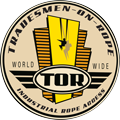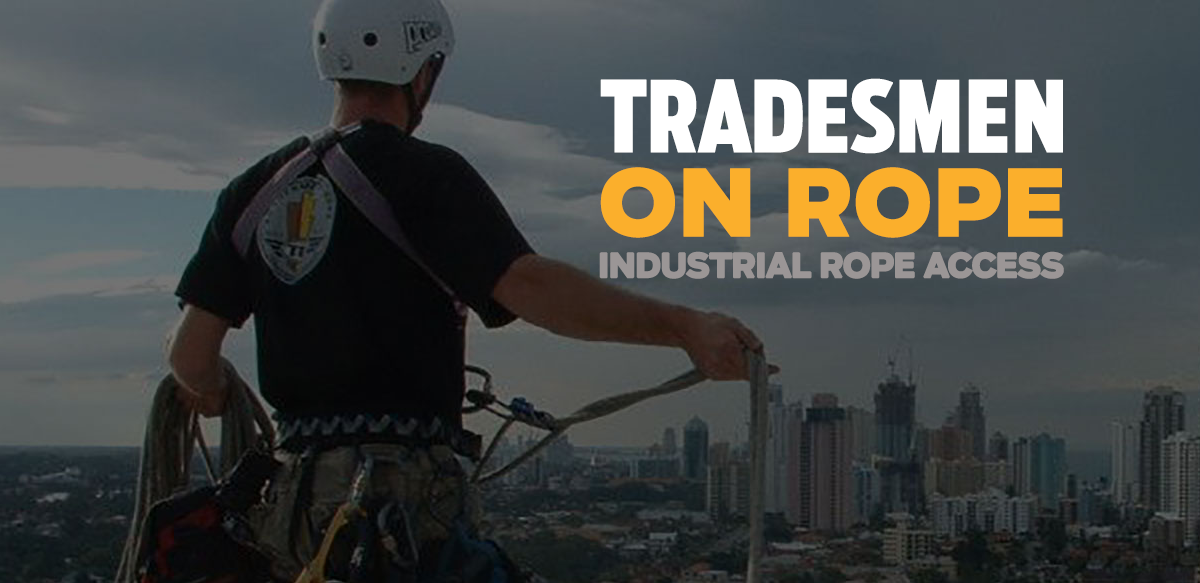Being an acknowledged profession, industrial rope access involves rope-work activity to help workers reach hard-to-access places such as the outside of the windows of buildings, oil platforms, rigs and more difficult to access structures. However, the job itself appears daunting to many individuals – as it involves being suspended in the air by a harness and ropes. But IRATA assures the safety and training of almost 100,000 rope access technicians worldwide.
Certification
Industrial rope access trade association (IRATA) is the world’s leading authority on industrial rope access and any person interested in this field of work must be equipped with an IRATA certificate, as it is a major prerequisite. This line of work itself has much diversity within itself, which gives individuals a broad spectrum of jobs to be skilled in. A skilled and certified technician has the abilities needed to formulate plans regarding rescue and hauling, repair, maintenance, cleaning and inspection.
Industrial Scope
Rope access technicians ascend, descend and transverse ropes for the required jobs while being suspended in a harness. In some long-duration jobs, a work seat is also used. Due to the booming world of industrial and technical advancement, this job, in particular, is in great demand today all around the world. From power plants to construction sites and even offshore installations in deep mines these technicians can cover a variety of fields.
History
Rope related activities had started off being used for recreational purposes such as for rock climbing, bungee jumping, and mountaineering. However, as the demand for labour increased in an already dense industry, people started using them for commercial and industrial purposes. But not anyone can become a rope access technician. Being suspended from intimidating heights while being expected to inspect or maintain bridges or power plants is not in everyone’s interest…
Rope technicians are a very cost-effective method for carrying out constructions at altitudes without the use of scaffolds or aerial work platforms to help them out.
Many of the standards that have been implemented in this field of work was done after the fatal incident in 1980 where, due to a rope failure, two fire-fighters failed to escape from the seventh floor of a burning building. The previously mentioned trade association, IRATA, has strict policies which oblige companies to report all accidents, incidents or near-miss occurrences so they can be analysed and faults can be corrected to prevent any future technicians from being vulnerable to hazardous situations.
Due to this, very few accidents have been recorded since the introduction of industrial rope access in the 1980s.
Much to the media’s dismay, industrial rope work is much less dangerous than it is portrayed. It has been life-saving on many occasions such as building fires and mine explosions. With the technologically advanced society of today, associations like the National Fire Protection Association (NFPA) aim to set standards for equipment, training and the terminology regarding fire rescues.
Due to these precautions, coupled with the high demand, many people are now taking interest in becoming rope access technicians. Contact Tradesmen On Rope today.

Industrial rope access is a form of work positioning which includes the usage of ropes and harnesses to help technicians do a variety of jobs, from building repair and inspection to fire rescues. What started as just a leisure activity, such as mountaineering or rock climbing, was adopted by the industrial sector when it was found that without the help of any aerial work platforms or scaffolding, rope access makes it difficult to reach places more accessible. Due to the diversity, the job allows, rope access technicians are equipped with a variety of skill sets and qualifications.
Industries That Deal with Natural Hurdles
One of the industries that require aid from these technicians is Nature itself. It is quite difficult to stabilise cliff sides, prevent landslides or even to protect and maintain landmasses that have a heavy historical significance, by the use of heavy machinery. But, with a skilled enough technician and a stable rope harness, jobs such as scaling, drilling, cabling, meshing and inspecting natural structures like roadsides and caves are easily carried out. Some industries rely heavily on rope access technicians such as the road and rail industry, which need installations of rock-fall nettings and catch fences along earthworks.
The Offshore Industry
Another industry, which has strict requirements regarding safety, limited workspace and precision is the offshore industry. Offshore platforms often require the work of trained rope access technicians to perform operations on oil and gas rigs. The duties of these technicians are mainly divided into three categories, which include maintenance, inspection, and construction. Maintenance jobs usually include repair work, welding, plating, painting and rust removal. Inspection jobs on the other hand cumulate jobs such as coating surveys, quality control, and safety inspection. Construction technicians, however, deal with rigging, pipe fitting, and electrical work. The offshore jobs are not for the most inexperienced workers, as the job requires long work hours and a specific set of practical skills, as confirmed by the Industrial Rope Access Trade Association (IRATA).
Work-at-Height Jobs
Furthermore, as contemporary buildings are becoming taller and complex as the days go on, they need rope access technicians more than ever. Man-made structures such as towers, bridges, radio masts and dams also need regular inspection and maintenance. Though the on-land jobs do not require that many skills and training, technicians still have to take in mind the right safety precautions while on this job, even if any occurrences of accidents have rarely been reported to the IRATA since the 1980s. Some technicians also take on the responsibilities of painting or cleaning extravagant buildings.
The Energy Industry
Lastly, there is also a hefty amount of jobs in the energy industry as well where power stations, refineries, wind farms, and utility poles are in constant need for rope access technicians to maintain and repair at intimidating heights. However, due to the involvement of high voltage electricity, safety precautions are heavily emphasized upon. Thus, only skilled and qualified technicians are usually hired to overlook these duties.
In conclusion, this deduces how multifaceted the rope access industry really is. Thus, every technician requires an official IRATA certificate which attests to their skills and years worth of qualified training to be handling such sensitive jobs.

Rope access is a work positioning tactic used by experienced and well-trained workers by the use of climbing techniques and ropes. The evolution of rope access dates back to around the 18th century as it uses techniques used in caving and mountain climbing. It provides for the fulfillment of every employers’ wish i.e. lesser equipment and fewer men. It does not require any aerial working platforms, cradles, etc. The labor can easily adjust the rope access assembly as per his comfort while working. It can even be attached to a normal office working seat.
Versatile For Maintenance Jobs
It is imperative to understand that rope access can be used in a wide variety of ways and is not only limited to construction and maintenance purposes. There is a multitude of projects where rope access has proved its magic. These include sign servicing, exterior painting, and many more. Given below is a myriad of reasons rope access should be the choice for every supported maintenance operation;
• Economic Feasibility: Rope access is lighter on pennies and gives you a considerably increased profit. It means that it will not cost an arm and a leg to achieve the desired levels of production.
• Eco-friendliness: Rope access offers a stark comparison with conventional methods in terms of energy needs and effects on the environment. It leaves a minimal footprint as it does not require petrol, oil or even electricity.
• Robust and effective: The operation and system of rope access take minimal time to build and dismantle. It means time efficiency and negligible obstruction in other operations.
• Safety Assurance: Safety assurance in any maintenance system is the pre-requisite for its selection. Rope access systems require prior training and even certification by third-party trainers and technicians. These pieces of training are aimed at ensuring safe systems of rope access management, rope rescue plans, dropped objects control, etc.
• Flexibility and Access: The system is designed in such a way as to reach areas that could have been a bane for conventional methods. Whether you need maintenance for chimneys, water pipes, smokestacks, roofs or any such place; rope access is the simple answer.
A Light and Portable System
The system is flexible enough as it offers considerable room for rescheduling, for instance; in case of any mishap or change in weather or working conditions. With conventional equipment, it could be a Herculean task and a logistical nightmare. Contrarily, rope access offers an easier option to just dismantle the system and move to the desired location.
Benefits of Rope Access for Building Maintenance
Apart from the above-mentioned aspects, rope access can provide multiple other benefits for maintenance and construction. It can serve to customize the process as per individual needs and preferences, offering a swift system of implementation. It is a conventional notion that the economic cost of building maintenance becomes very hefty, particularly when maintaining a tall building structure. Rope access, with its efficient system, pacifies this notion and provides an opportunity to make real savings regardless of the height of the building.

A simple answer to this question can be that yes, it is safe. Yet, this answer comes with many dos and Don’ts. Rope access requires specific training by technicians and third-party certification, which is different in different regions of the world. Health and safety executives perceive it as a ‘potentially dangerous’ system. Well, in a way, it is the same as dangling barefooted from a skyscraper. In reality, rope access has a much better record of safety than many other conventional working systems known for working with heights.
Fortification by IRATA
The International Rope Access Trade Association (IRATA) overlooks the training, directing and regulation of workers in this field. The training specifically involves the standards of safety, professionalism, and all regulations while working at such heights. The trainees are not only taught about working systems but also regarding the state legislation which governs all such operations. IRATA offers certification at three distinct levels considering time and expertise. If a worker wants to be swinging sky high, he has to bag all these certifications to be safe while he’s at it.
The rope access industry is among the most tightly controlled industries. It has pre-set regulations and specific rules meant to decrease the likelihood of mishaps. The 2005 Work at Height Act mentions these regulations. While perfectionism can be a sin when it’s for nothing, it is bliss when it saves lives. It attempts to remove any probability for human error before the work at site proceeds. It ensures that the workers are taking the appropriate training of personnel, safety requirements, responsibilities and precautions.
The workers in this field have much more adherent work ethics. The high-risk nature of this adventurous job requires them to possess a tinge of professionalism in the field. The IRATA trains certified workers specifically for professionalism, group work, and following standard operating procedures. Moreover, supervisors are present for the guidance of workers and students at every rope access. These supervisors also ensure the observation of security measures and safety protocols. The training proceeds in such a way as to enable the workers to get the job done in the safest possible way.
In this regard, the workers cannot use their cellular devices or any other object which has the potential to cause a distraction to their focus. Technicians also work in group trainings in pairs to offer assistance to each other in case of need.
Safety Culture and Additional Protection
Lastly, it is noteworthy that the rope access system does not necessarily include just a rope. The workers are not merely swinging barefooted on a rope, like Mowgli. There are two separate ropes they can make use of that complement each other. An anchor point grips each rope. So in case of a mishap, there is always a backup.
Seasoned professionals robustly check the system before every use. They can address any defect or even a minor fault, before usage. Strict safety culture forms an integral part of the rope access system and does make it an entirely safe job.



